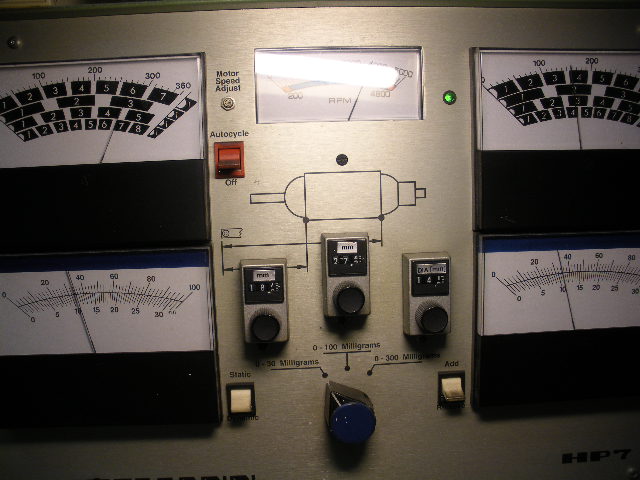
#1151

Posted 06 February 2010 - 07:18 PM
I was pondering the use of your shaft arm removal clamp and realized you could use it to mount a pinion gear too! What are your thoughts please?
Thank you.
Ernie
#1152

Posted 06 February 2010 - 07:28 PM
I intend to live forever! So far, so good.
#1153

Posted 07 February 2010 - 03:14 AM
I was pondering the use of your shaft arm removal clamp and realized you could use it to mount a pinion gear too! What are your thoughts please?
100% what Bill said Ernie. I think that solder-on is the way to go also, but it's one of those things where I could see either side.
-john
#1154

Posted 07 February 2010 - 03:29 AM
Excellent with the clamp pics.
I must ask since I been wondering a long time.
Whats is 16D, 26D, 36D?
The difference?
Who then is a C-Motor? D-Motor? A????
Measurements?
Regards
Jens
#1155

Posted 07 February 2010 - 04:16 AM
I would use 5% on cobalts but 10% on low power mags like ceramics. This is why my Front Line I-15 mags years ago ran no shorter than .480-.485" following the 10% rule for ceramics because we ran a .440" stack. Another reason the mags need to be longer then the stack is whats called "end turn saturation" of the coil and is very true of low power magnets like ceramics and designs in motors we use now as well as some of the low power Neos in use. Not only will they vibrate but with too short of mags they will run hotter as well.
Years ago I felt I wanted a shorter axial length of the magnet and a higher rotational coverage for my I-15 mags. The ones I ran of Kofords before mine came out were very long in axial lenght but also very short in rotational coverage. They were fast but ran hotter at times and required many times motor changes during a race like opens when they would heat up and bog a little. I designed my mags to try and get away from so many motor changes.
Keith Keeler won many Nationals using Front Line mags with just 1-2 motors for the day if he qualified into the semis. His son won a I-15 Nats as well also.
Barney Poynor
12/26/51-1/31/22
Requiescat in Pace
#1156

Posted 07 February 2010 - 11:09 AM
Yeah...talk about a coinkydink eh? BTW, it was (as always) very cool talking with you the other day and I could easily burn up a lot of a day just doing that with you
The balancing thing is a funny sorta "almost sore spot" that seems to come up not infrequently. Of course dynamic balancing is the best, most accurate way to do an arm, but there is the practicality question for the latter day rewinder (moi!). Looking at all this, I quickly decided when I got back into winding, that there was no way in heck I was going to stop each arm in it's tracks and send it out to be balanced...that would be idiotic besides being in many cases pointless!
1) First there's the money question. Motor work for me is NOT a business and I lose a lot of money just on materials on these things let alone the stoopid number of hours involved. Sometimes I get a bit of money from someone in exchange for doing a project, often I get a pile of old motor parts and other stuff. Often the motor stuff is mostly el-garbagio
2) There's also the reality that there are factors way more important (if you can do even a decent job of static balancing) than the potential improvements to be gained from dynamic balancing over static on these motors. That's just the way it is and doesn't detract from the advantages of dynamic balancing on a race motor where guys are fretting about the difference in the weight of one type of lead wire over another
People often seem to take what I'm saying about static balancing as my saying that dynamic balancing is a waste...even when I go out of my way to clarify, qualify, explain otherwise. I'm not trying to reinvent the wheel here, nor to rewrite the laws of physics. What I'm doing is my version of what the home winders were doing when I was a kid and there was nobody I knew then that was sending their arms out to be dynamically balanced. In spite of all that, we sometimes produced some exceptionally fast (a relative term) motors and the feeling of accomplishment from having "done it all yourself" was wonderful. If someone wants to wind an arm, then send it to someone to tie and epoxy, send it to someone else to balance and send it to someone else to cut the com and send it to someone else to polish etc., they're missing out on most of the process!
-john
#1157

Posted 07 February 2010 - 12:15 PM
John I'm not saying I'm right but just the way I have learned over the years talking to many people with smarts that work in industry. You can take it with a grain of salt John. Ron has much more vast knowledge than I have! There is "more then one way to skin a cat" and I tell this to people all the time. I had to talk to many people in industry to try to figure this out for myself.
I was lucky enough to have ran the Koford mags and had a couple of record setting setups with them before I finished the R&D on my mags. There are many ways to accomplish a fast lap and most "blame'" the motor but any real racer knows its "the package" of chassis, driver, setup and motor that does it. I can only say what has worked for me and what I do, not that it's the only way to do it.
Boring History unless you were a I-15 racer:
In 1985 So Cal USRA racer Tommy Orcutt set a world record with one of my Koford mag setups at the Westen States race at Valley Rwy in So Cal beating the then record holder Dan Green's 3.1?? record and I was 2nd qualifier a 1/100 back of Dans record that day. I was still not ready to release my mags and after the Nats that year (1985) I met Dan Green on the way home from the Nats. I told him of my magnet ideas and told him I would send some out to him.
In early 1986 I sent Dan 1 of 2 pre-production Front Line mag setups, the same one I had used at the Western States with that Koford arm and now with my own mags that I had hand built. Dan was going to the same track he had set his record on... Gary Gerding's track in Omaha. He ran the motor and called to ask if he could run it and I did not think it was fair to race it as they were not in production yet. In practice he broke Tommy's record easy.
I think it was 1 mo. later I released my mags and Dan used a set to break Tommy's record with a 3.051 record. He then a few months later he broke and set another record with a 3.028. In early 1987 he was the first I-15 racer to go into the 2's with a 2.952! That year Ted Pace out of PA's track went 2.851 at the 87 Nats. Yes some of this was chassis design improvements as time went on NOT just magnet material and designs.
But it was funny when I would meet people based in industrial motor design most would never do what we do with motors and you had to tell them that performance is top of the list. Efficiency is out the door with slots. When you show them a open frame open motor they can't believe it does what it does. These are just slow blow fuses that we play with.
Barney Poynor
12/26/51-1/31/22
Requiescat in Pace
#1158

Posted 07 February 2010 - 01:31 PM
-john
#1159

Posted 07 February 2010 - 03:58 PM
Barney Poynor
12/26/51-1/31/22
Requiescat in Pace
#1160

Posted 07 February 2010 - 04:31 PM
QUOTE (TonysScrews @ Feb 6 2010, 12:48 AM)
Question.... Can anyone confirm if I have these windings correct? What is the standard stack length of each of these motors?
1.16D - 70T30
2.S16D - 60T28
3.Outlaw S16D - 60T28 (same windings but shorter stack?)
4.S16C - 55T28
5.Super Wasp - 60T30
6.Contender - 55T30
7.Group 12 - 50T29
8.Competitor - ? (not sure if this is another name for Contender?)
Thanks and best regards,
Tony P.
USRA Minimum stack lengths...........................
1. .600"
2. .490"
3. Not a USRA spec arm...... they varied .350" to .440" depending on who made them at the time
4. .490"
5. .350"
6. .440"
7. .350"
8. .440"
Thanks Ron!
On #8, is the competitor the same motor as a contender?
Get screwed by... Tony's Screws
#1161

Posted 07 February 2010 - 06:25 PM
Some of the final arms that came from Checkpoint were by sheer luck in perfect balance when checked on the balancing machine. So is it possible that a dynamically balanced arm might not improve a statically balanced armature, yes, but it doesn't happen often enough to be statistically significant.
There are even differences between different balancing companies and different balancing machines. There is a reason people have bought these machines for thousands of dollars and mastered their use. Armature reconditioning costs are one of slot racings real bargains.
Mike Boemker
#1162

Posted 07 February 2010 - 06:36 PM
There is a reason people have bought these machines for thousands of dollars and mastered their use. Armature reconditioning costs are one of slot racings real bargains.
Absolutely...and sending out home wound arms (what this thread is about) for this is probably very like throwing money out the window.
-john
#1163

Posted 07 February 2010 - 07:52 PM
Absolutely...and sending out home wound arms (what this thread is about) for this is probably very like throwing money out the window.
-john
Given the quality of your work I could not disagree more.
Mike Boemker
#1164

Posted 08 February 2010 - 07:57 AM
I took a brand new P-S Contender arm with drill blank shaft that was in unbalanced state....no holes....... and checked the static balance
It was over 30 milligrams out of balance static...........
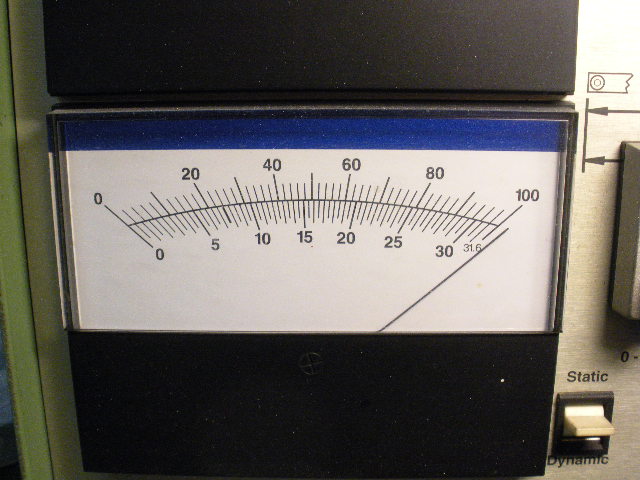
Then I corrected the static balance to zero milligrams............
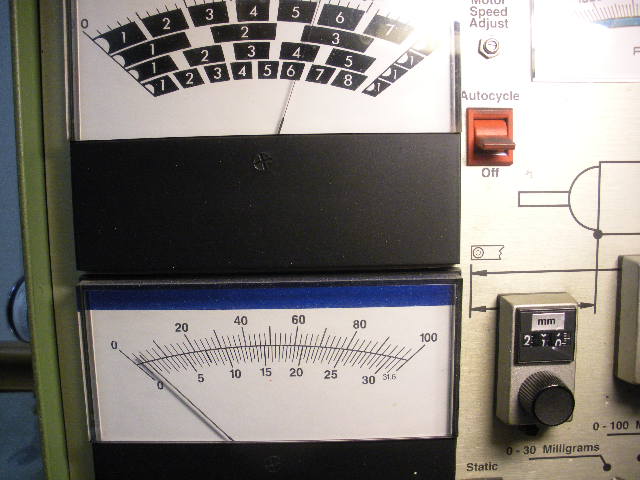
Then I checked the arm for Dynamic balance............. It was "out" of balance by about 11 milligrams on each side or "plane". That would be a "shaker" with that amount of "unbalance".
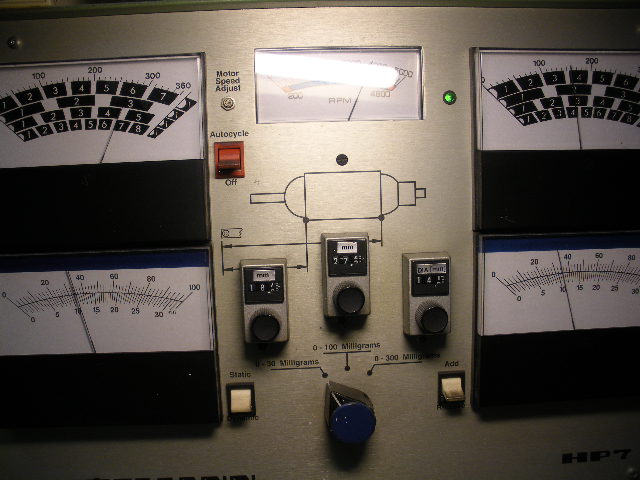
I then dynamically balanced the arm to zero milligrams.................
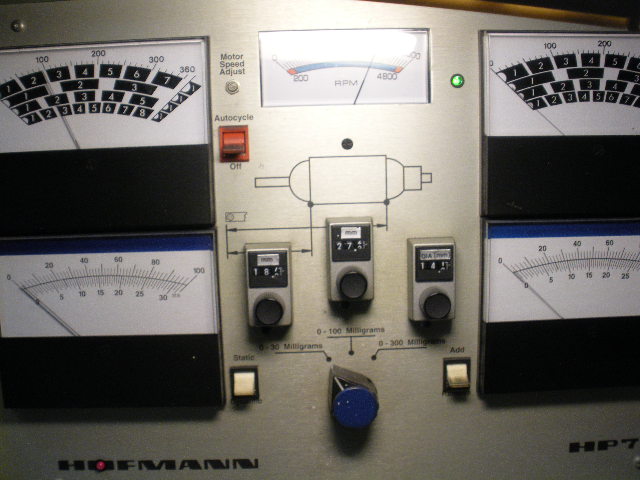
I then went back and checked the arm for static balance after dynamically balancing the arm to zero...... the static balance went back to 25 or so milligrams out of balance after statically balancing the arm
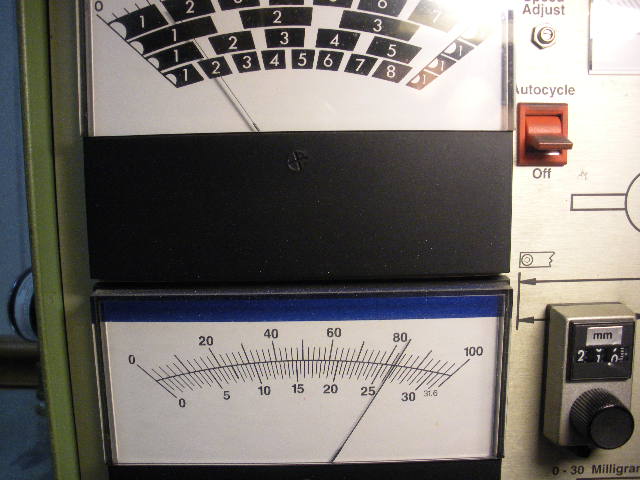
So what does this prove..... like I said before......... a arm that is statically and accurately balanced to zero ( and you would have to have a machine to show this ) will NOT be balanced accurately dynamically.
It also proves that a arm that is perfectly and accurately dynamic balanced will not be statically balanced to zero..... there will always be a amount of out of balance statically while being dynamically balanced to perfection.
So yes..... statically balanced arms will show a great improvement when balanced dynamically.
#1165

Posted 08 February 2010 - 08:20 AM
1)Dynamic balancing is more accurate (that makes maybe a bazillion times I've said this)
2)Static balancing can make a significant improvement in the way an arm and a motor runs
3)Static balancing is entirely appropriate for these home-wound motors and can easily be learned and done at home. However, if a person wants to send an arm out to be dynamically balanced...cool, it's their money. No one should be under the delusion that they're going to be the next Steube, Green etc. and that, were it not for a microgram or two here and there, their arms will be the next big thing.
The idea here (my arm winding thread) is to show that people can wind arms and build motors at home using either vintage or new parts in a very similar way to how people did them in the 60's. I am not a purist by any means (not that there's anything wrong with that) and my thoughts here aren't based on that either. People can have fun with arm-winding in an age where throwaway motors are the norm, but they also should be realistic about what they can achieve.
I know threads have a way of going sideways and that's fine, but it would be nice if people would both listen and not try and disprove what I haven't said here ...as well as stay close to on-topic.
Given the quality of your work I could not disagree more.
Thanks for that, but my work may at times look pretty...but it's subject to the same failures as were the arms done by me as a kid, especially if I push the envelope. I can get a motor to run just fine without going any further than my basement which is what I've set out to do here. So let's see how many more times we can go back and forth as though we were disagreeing about something when we're really talking about two different things.
-john
#1166

Posted 08 February 2010 - 11:17 AM
Will you be doing up any more of those SCX motors? If a person was interested in having you do a SCX motor, would any of the SCX motors be a satisfactory candidate for one of your "hot wind-ups"? Or need it be the RX242?
What are your thoughts on comparing your SCX "tiny terror" against the "walnut" motor you built for Jeff - the power potential between these two motors please?
Thank you John.
Ernie
#1167

Posted 08 February 2010 - 04:39 PM
Sure I'll do them, they're great little motors. The "Little Terror" wind is something that should go through S&E since that was worked up between myself and Ed Miller. It wouldn't be right to go around him after he spent the time, effort ANF sent me the motors to experiment with. Any other winds I can do though and the SCX can go all the way to a sort of G20 equivalent with a different com and endbell. If that's what you want, the Pro Slot C-can endbell is both close enough to fit with some trimming and is certainly a quality piece that is appropriate...they're something like $8 with the hardware. Without changing the endbell or the com, the motor can be rewound to be much faster than stock but still mild enough to live...sort of a modern version of an early Mabuchi rewind.
As to which motors, the ones I've done are the RX42 & RX42B, the long shaft variant that SCX uses in their 4WD cars called the "Pro Double Rallye" and the "Pro Speed". Of all these, the RX42 and RX42B are the least expensive (around $8.50), with the RX42 being discontinued and replaced by the RX42B.
-john
#1168

Posted 08 February 2010 - 05:09 PM
"I've tried long pieces of "drill rod" and it's a pretty good material as well and much cheaper than drill blanks, but drill blanks are the best for those "special jobs"
John I'm not sure what temp you would have to do it with or the technical aspects of it but you can "heat treat" those "drill rod" shafts after you cut to the size you need. I'm not sure if they centerless grind oversize shafts after heat treating or what but... This may be a cheap fix for having to buy drill blanks. You would need to check for straightness after to make sure they are right but... Just a thought, you can look into it.
John here is a link I think I told you about? It's pretty easy to powder coat your stacks if you want to spend a few $. There may be other stuff out there but Eastwoods sells quality tools and stuff. I have bought from them for years.
http://www.eastwood....er-coating.html
Barney Poynor
12/26/51-1/31/22
Requiescat in Pace
#1169

Posted 08 February 2010 - 08:26 PM
John I'm not sure what temp you would have to do it with or the technical aspects of it but you can "heat treat" those "drill rod" shafts after you cut to the size you need. I'm not sure if they centerless grind oversize shafts after heat treating or what but... This may be a cheap fix for having to buy drill blanks. You would need to check for straightness after to make sure they are right but... Just a thought, you can look into it.
Hi Barney,
I've looked at that and the "air hardening" rod just needs to be heated to bright orange red AFAIK, but straightness doesn't seem to be quite up to the drill blanks. For all intents and purposes, simple piano wire can work. It's fairly hard and straight enough in 2" lengths and extremely cheap. After that (and for the relatively few arms I do compared to an actual motor company), I'm OK with drill blanks and the extra cost is sort of worth it (for me anyway) for the better results.
John here is a link I think I told you about? It's pretty easy to powder coat your stacks if you want to spend a few $. There may be other stuff out there but Eastwoods sells quality tools and stuff. I have bought from them for years.
Yes...that is a very cool setup and I had bookmarked it the last time you pointed me there for when the "cash flow" thing is happening
-john
#1170

Posted 08 February 2010 - 08:45 PM
John's right on this, bite it and spend where you must. And, based on my non-slots engineering experience, as a rule GOOD piano wire's great in more applications than we want to admit.
Duffy
1950-2016
Requiescat in Pace
And I am awaiting
perpetually and forever
a renaissance of wonder
#1171

Posted 08 February 2010 - 09:22 PM
"Everything you love, everything meaningful with depth and history, all passionate authentic experiences will be appropriated, mishandled, watered down, cheapened, repackaged, marketed, and sold to people you hate." Von Dutch [Kenneth R. Howard] 1929-1992
."If there is, in fact, a Heaven and a Hell, all we know for sure is that Hell will be a viciously overcrowded version of Pheonix." Dr Hunter S Thompson 1937-2005
"Whither goest thou, America, in thy shiny car in the night?" - Jack Kerouac 1927-1969
"Hold my stones". Keith Stone
My link
#1172

Posted 08 February 2010 - 10:01 PM
It's not really a shame at all from my POV. It ceases to be "home winding" at some point when you have the analog to a full industrial motor shop. For me anyway, this is supposed to be "kitchen table" stuff you can do while sipping a Chateauneuf Du Pape and munching on super ripe Camembert (the stinkier the better!) on melba rounds
I once worked for someone who balanced arms and he explained to me the problem with piano wire for motor shaft is it is often not round
...even if you have some piano wire that is fairly round ( I do), it needs to be polished for it to roll with the least resistance across the razor blades or gauge pins. For me, the bigger problem with piano wire is that it's slightly undersized and can produce a bit of a sloppy fit in some bushings. Tight bushings can work seemingly just as well as bearings so the size (down to the ten-thousandths) of the shaft material is very important.
-john
#1173

Posted 08 February 2010 - 10:12 PM
I use silver solder on milder arms, as well as arms that don't have "hook" tabs that I can crimp. On the hotter arms, I braze the com connection using a 55 amp car starter/battery charger. For a "heater", I use the carbon electrode from the inside of an oldstyle carbon/zinc C size battery. I sharpen one end to a point so I can place it accurately on the com tabs...and also to concentrate the heat. I made a footswitch to complete the circuit using a 50 amp boat starter switch (momentary, normally off) mounted in a PVC box. The negative clamp from the car starter is ground out to better fit the com and the positive clamp goes to the footswitch. Then a separate cable goes from the footswitch to a second clamp that holds the carbon "heater". I have used fine silver wire for the brazing metal, but have better/neater results using jeweler's silver/flux paste (1200 degree F) that comes in a very fine tipped syringe. It's a little fiddly and you have to carefully hold the heater in place with one hand, the arm with the other and trigger the footswitch for approx 2 seconds to fuse the silver. If you slip, you'll either blow right through the com tab or hit the com and blast a hole in it. With practice (and it does take a little practice), you get consistent and very durable joints that will take even the hottest winds. I usually don't do this on wire finer than #27 because it can melt the wire if you stay in contact with the com for too long...but I have done it on occasion with #29 wire. Anyway, I shoot some of the powdered silver/brazing flux paste into the hook of the com tab, then crimp it closed and then do the brazing afterwards.
-john
#1174

Posted 08 February 2010 - 10:57 PM
I intend to live forever! So far, so good.
#1175

Posted 09 February 2010 - 12:07 AM
Thank you John.
Ernie



 This topic is locked
This topic is locked




